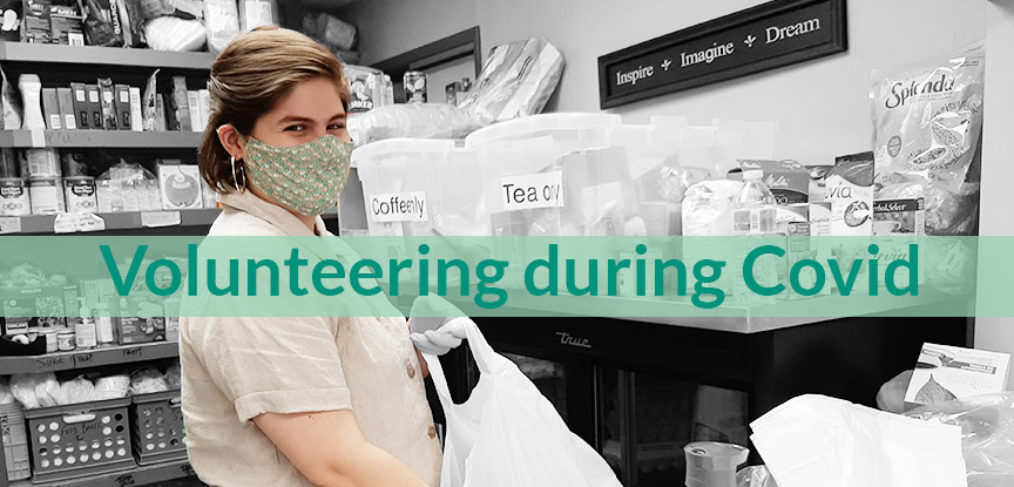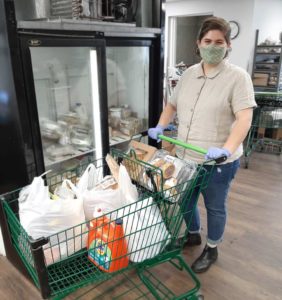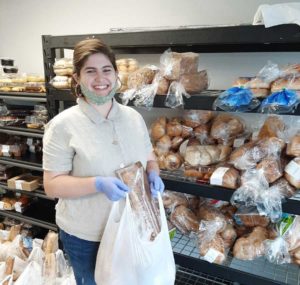
Volunteering During COVID-19
When the government announced that all non-essential businesses were to close, many found themselves laid off from their jobs. In fact, at the Food Bank we had to layoff many vulnerable volunteers to keep them safe while COVID-19 was prevalent in the community. That left the Food Bank with some big volunteer holes to fill! That’s when we met Jess.
 Jess wanted to make use of the time she was given after she too was laid off from her job during the Pandemic. She chose to volunteer at the Food Bank because she says it was a very tangible and direct way to help the community.
Jess wanted to make use of the time she was given after she too was laid off from her job during the Pandemic. She chose to volunteer at the Food Bank because she says it was a very tangible and direct way to help the community.
Once Jess started volunteering, she was met with a few unexpected surprises. She was shocked to find that the Food Bank building is much smaller than she thought it would be. So much goodness happens in such a small space. She was surprised by the diversity of volunteers and was welcomed into a kind group of people. Together, they packed hampers and sorted fresh produce for distribution.
Here are a few questions we asked Jess
Was volunteering everything you expected?
“Honestly, I thought I would be interacting with the guests much more. It didn’t occur to me at the time that due to COVID-19 and social distancing I would be interacting more with the staff and volunteers. The staff have been so sweet. The best part of volunteering has been working with such a kind group of people and feeling so useful doing the job that is so needed.”
What surprised you the most?
“I was surprised at how many people accessed the Food Bank each month. I read somewhere that 3,000 people are served through the Food Bank each month.”
What was the worst part of volunteering?
“Something I will never forget is the smell of rotting watermelon.”
What’s the one thing you would want people to know about the Food Bank?
 “It’s (supplemental food hampers) needed so badly. When I first decided to sign up for volunteering, I was looking on your website and I read that less that 2% of your funding comes from government funding. That means 98% of food, time and money comes from the community. I was surprised to know that when it really matters the community steps up to care for the most vulnerable. The capacity for kindness that people have was inspiring. That inspired me to do it too.”
“It’s (supplemental food hampers) needed so badly. When I first decided to sign up for volunteering, I was looking on your website and I read that less that 2% of your funding comes from government funding. That means 98% of food, time and money comes from the community. I was surprised to know that when it really matters the community steps up to care for the most vulnerable. The capacity for kindness that people have was inspiring. That inspired me to do it too.”
What’s next for Jess?
“I’m off to University of Victoria for Indigenous studies for Bachelor of Arts degree. I’m hoping to pursue teaching in some capacity.”
Thank You Jess
We’re so thankful for Jess and others like her who step up to the plate to feed the hungry in Abbotsford. We wish Jess all the best and know she will go on to continue to make a difference in any community she calls home.
